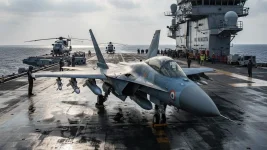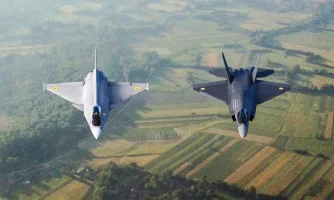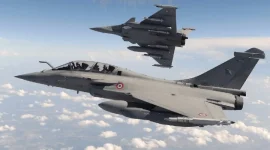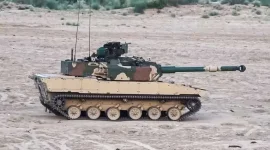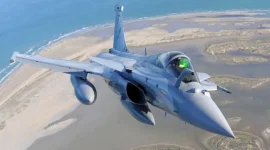- Views: 6K
- Replies: 30
The Indian Air Force (IAF) is reportedly pursuing the acquisition of 40 additional Rafale fighter aircraft directly from France, signalling a move to rapidly enhance its operational strength.
According to recent information cited by the Bharat Shakti portal, the IAF has made a formal request through a government-to-government channel with French manufacturer Dassault Aviation.
If approved, this purchase would significantly bolster the existing fleet of 36 Rafales inducted between 2020 and 2022, bringing India's total inventory of these advanced jets to 76.
This potential acquisition aims to address the IAF's immediate need to increase its number of fighter squadrons, which currently stands at 31 against a sanctioned strength of 42.
Opting for a direct government-to-government agreement, similar to the €7.87 billion ($8.56 billion) deal concluded in 2016 for the initial 36 jets, allows the IAF to bypass the lengthy timelines associated with competitive tendering processes, ensuring quicker delivery of the aircraft.
However, this focus on acquiring more Rafales directly introduces fresh uncertainty regarding the long-delayed Multi-Role Fighter Aircraft (MRFA) programme.
The MRFA aims to procure 110 jets under the "Buy Global – Make in India" policy, involving significant technology transfer and local production. This tender, valued potentially over $20 billion, has seen minimal progress since a Request for Information was issued in 2018, despite attracting interest from global defence firms including Dassault, Boeing, Lockheed Martin, and the Eurofighter consortium.
Recent speculation, including an April 10 report by The Print, even suggested a possible government-level deal for 110 Rafale F4 variants, potentially manufactured locally, though questions persist about the extent of indigenous involvement versus assembly.
The current proposal for 40 Rafales is also a scale-back from earlier reports in 2024 which suggested the IAF was seeking 90 additional units to reach an original planning figure of 126. Complex requirements for technology sharing and establishing robust local production lines under the MRFA framework remain significant hurdles.
Furthermore, manufacturer constraints, such as Dassault's reported production rate limitations and existing export orders to countries like Indonesia, could affect delivery schedules to India unless a substantial domestic manufacturing plan is realised.
Parallel to these considerations, the IAF is demonstrating a strong commitment to its indigenous fighter programmes. State-owned Hindustan Aeronautics Limited (HAL) is expected to sign a contract soon for 97 additional Tejas Mk1A fighters, supplementing the 83 already on order. HAL is concurrently expanding its production capacity to deliver these aircraft more rapidly.
Furthermore, ambitious plans are in place for the next-generation Tejas Mk2, with the IAF intending to procure at least 110 units, potentially rising to 200. The first flight of the Tejas Mk2 is anticipated by March 2026, with squadron service planned around 2028-29. The increasing momentum of the Tejas programme directly influences the perceived urgency and scale of foreign fighter acquisitions.
Should the Ministry of Defence greenlight the purchase of the 40 additional Rafales, the IAF would field four squadrons of the type. While boosting capability, this number remains lower than the seven squadrons originally planned under the earlier Medium Multi-Role Combat Aircraft (MMRCA) effort, which eventually led to the first Rafale deal.
Logistically, concentrating future acquisitions on Rafales and the indigenous Tejas series could streamline maintenance and training for the IAF, which currently operates a diverse inventory including Russian Su-30 MKIs and MiG-29s, French Mirage 2000s, and Anglo-French Jaguars.
This move would also align with a reported long-term strategic objective to diversify India's defence hardware sources, gradually reducing its historical reliance on Russian equipment over the coming decades, a consideration potentially heightened by the ongoing conflict in Ukraine.

